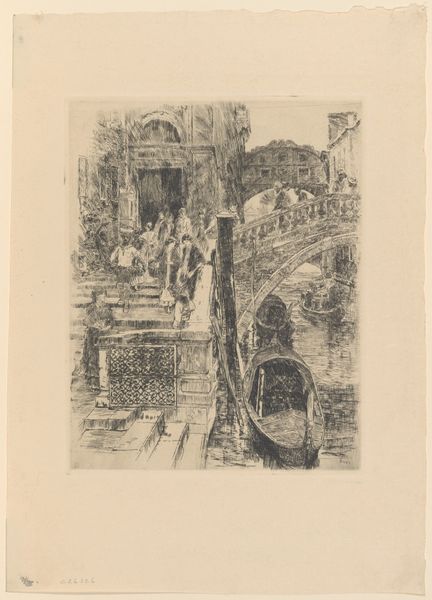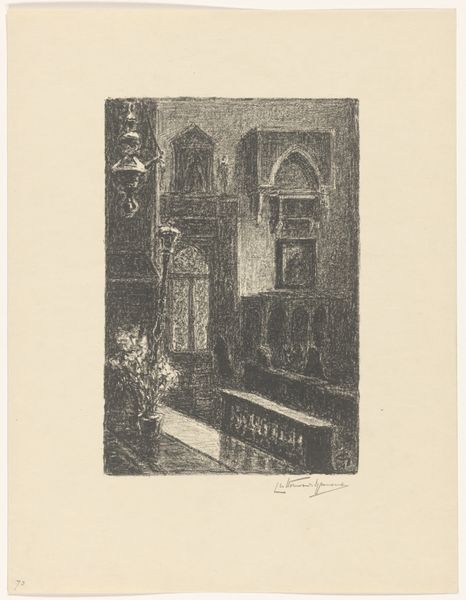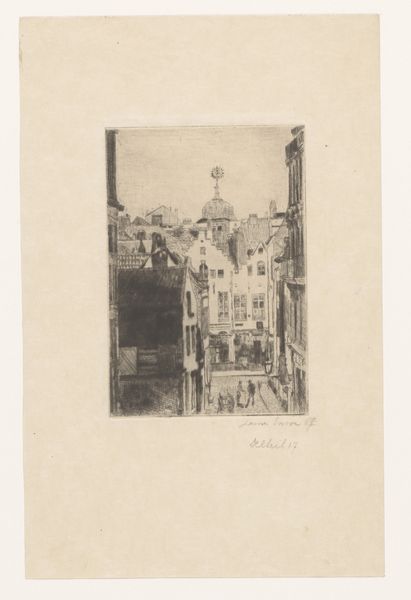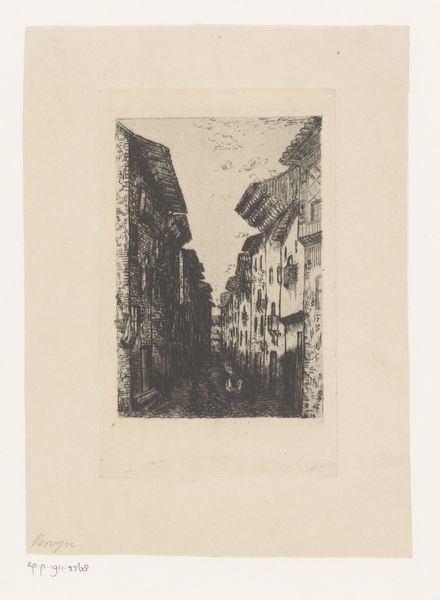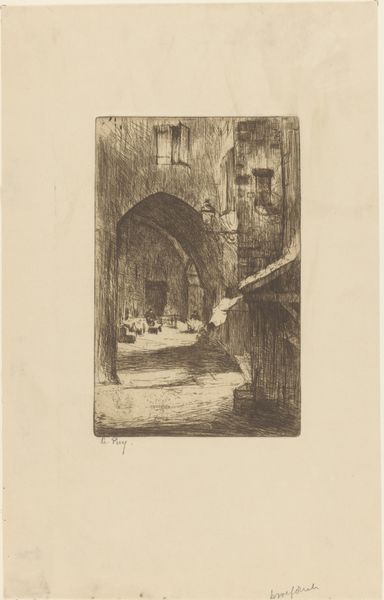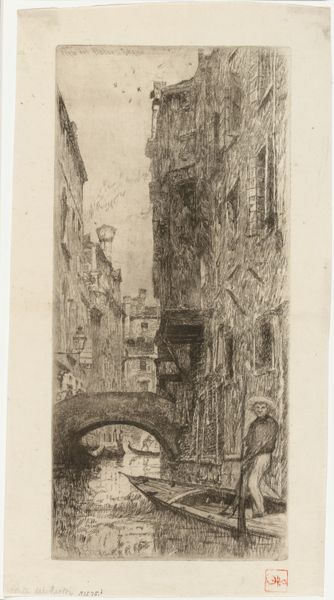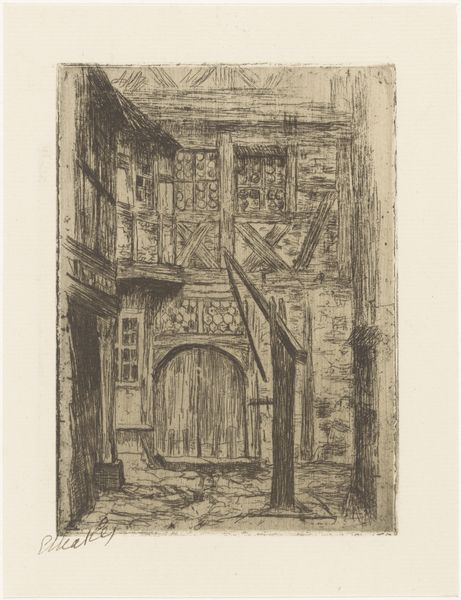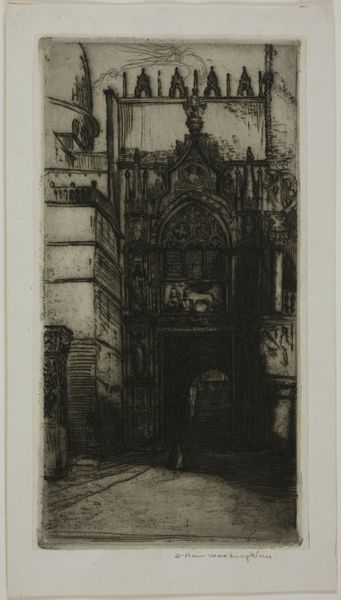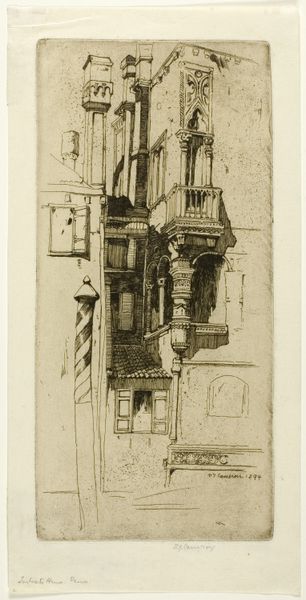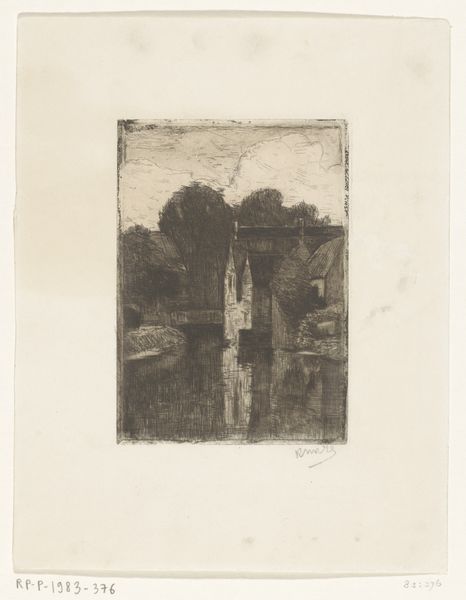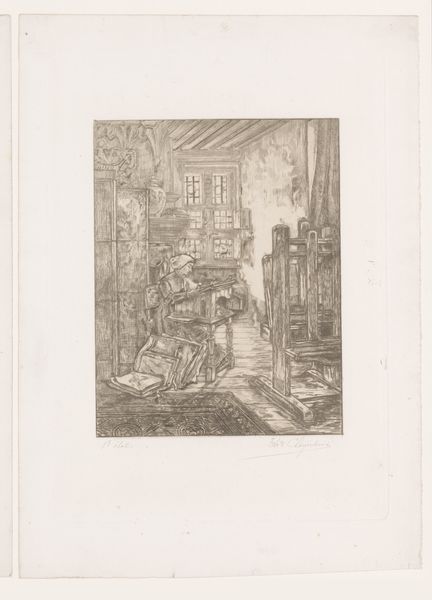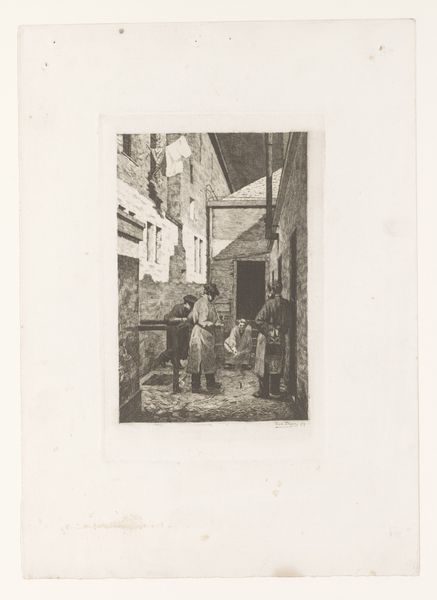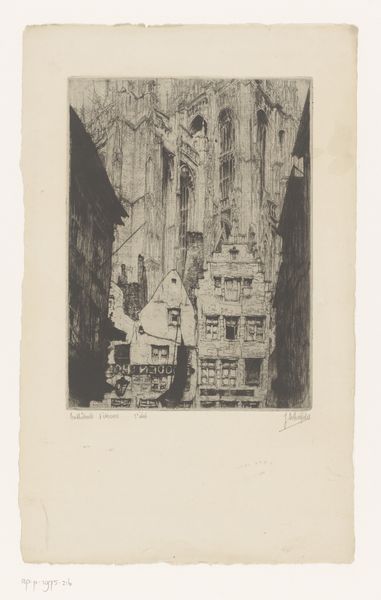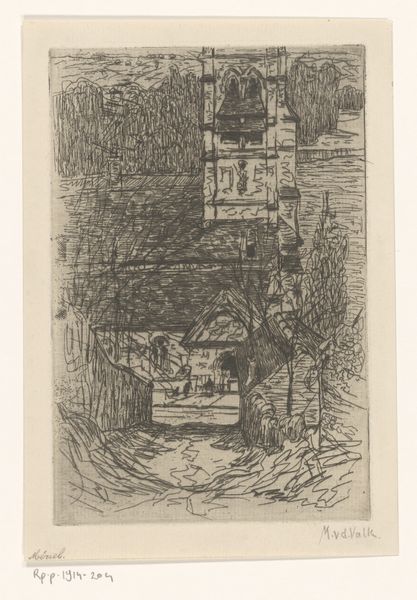
Kerkinterieur van de Frari in Venetië Possibly 1888
0:00
0:00
drawing, paper, pencil
#
pencil drawn
#
drawing
#
light pencil work
#
medieval
#
pencil sketch
#
landscape
#
paper
#
pencil drawing
#
pencil
#
pencil work
Dimensions: height 190 mm, width 117 mm
Copyright: Rijks Museum: Open Domain
Curator: This is Carel Nicolaas Storm van 's-Gravesande’s "Kerkinterieur van de Frari in Venetië," potentially created in 1888, a pencil drawing on paper. Editor: It's strikingly moody. The pencil work really emphasizes the cavernous feeling, all these stark lines contrasting against diffused light. You can almost feel the cool stone. Curator: Absolutely. Think about the role of the pencil here; it's a readily available tool, suggesting this could have been a sketch done on-site, perhaps during a Grand Tour. The reproduction and circulation of images of the church serve socio-economic and touristic roles in Venetian cultural production, as souvenirs. Editor: The material choice speaks to accessibility but also underscores the act of observation. What’s most intriguing to me is how Storm van 's-Gravesande has chosen to frame the interior. It isn't about grand vistas but rather glimpses of architectural details. Note that light source and how the railings partition off public space. How would we look at the interior when inside a space, as opposed to as an artistic subject? Curator: Exactly. And the Frari itself held significant social power. Churches were focal points for community gatherings and public events and often funded or promoted through civic boosterism or artists that could capture civic themes and history through imagery. This piece brings up questions of patronage. Was this made on request? Was this reproduced at large scale to celebrate an event? Editor: We could further analyze his approach with its limited tonal range, and how its circulation affected broader cultural perceptions. The sharp focus gives it an archival feeling, as though we are seeing through the lens of history itself. But by reducing such a large and complex space down to pencil and paper, is this a democratizing action for an artistic market, even if just symbolic? Curator: A vital point, that also alludes to the function and process behind art distribution in 19th-century Venice, an act of commodification and the art world surrounding such acts. I am convinced the piece shows not only artistic value but great societal importance. Editor: Precisely, by analyzing its construction we unlock avenues for contextualizing artistic output, and reception, to understand that world better. Curator: Thank you for providing insightful reflections on this image! Editor: My pleasure, that’s always how a materialist’s and historian's dialogue goes!
Comments
No comments
Be the first to comment and join the conversation on the ultimate creative platform.
